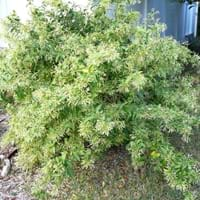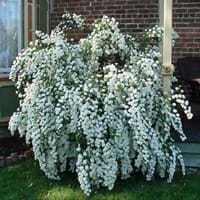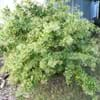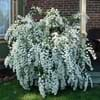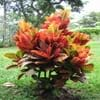Life Span
Perennial
Perennial
Origin
Mexico, Latin America and the Caribbean
Southern Asia, Southeastern Asia, India, China
Types
Not Available
Not Available
Habitat
Warm and moist climatic conditions
Cold Regions, gardens
USDA Hardiness Zone
9-12
9-12
Sunset Zone
13, 16, 17, 18, 19, 20, 21, 22, 23, 24
H1, H2, 23, 24
Habit
Oval or Rounded
Arching/Fountain-shaped
Flower Color
White, Light Green
White
Flower Color Modifier
Not Available
Not Available
Fruit Color
Not Available
Blue, Red
Leaf Color in Spring
Green
Green, Dark Green
Leaf Color in Summer
Green
Dark Green
Leaf Color in Fall
Green
Dark Green
Leaf Color in Winter
Green
Dark Green
Leaf Shape
Ovate
Irregular
Plant Season
Spring, Summer, Fall, Winter
Fall
Sunlight
Full Sun, Partial Sun
Partial Sun
Type of Soil
Loam, Sand
Loam, Sand
The pH of Soil
Neutral, Alkaline
Acidic, Neutral
Soil Drainage
Well drained
Well drained
Bloom Time
Spring, Late Spring, Early Summer, Summer, Late Summer, Early Fall, Fall
Fall, Late Fall
Tolerances
Drought
Not Available
Where to Plant?
Ground, Pot
Ground, Pot
How to Plant?
Stem Cutting, Transplanting
Rooted stem cutting, Softwood cuttings, Stem Cutting
Plant Maintenance
Medium
Medium
Watering Requirements
Requires regular watering
Average Water Needs, Do Not over Water, Requires regular watering, Water Deeply
In Summer
Lots of watering
Lots of watering
In Spring
Moderate
Moderate
In Winter
Average Water
Average Water
Soil pH
Neutral, Alkaline
Acidic, Neutral
Soil Type
Loam, Sand
Loam, Sand
Soil Drainage Capacity
Well drained
Well drained
Sun Exposure
Full Sun, Partial Sun
Partial Sun
Pruning
Prune in the growing season, Prune to half of its height, Remove dead branches
Prune in late winter, Prune in spring, Remove damaged leaves, Remove dead branches, Remove dead leaves, Remove dead or diseased plant parts, Remove deadheads
Fertilizers
fertilize every 2-3 weeks while growing, light feeding and water solubles
All-Purpose Liquid Fertilizer, Apply N-P-K
Pests and Diseases
Aphids, Black spots, Caterpillars, Foliar disease, Sap-Sucking Insects, White spots
Red blotch
Plant Tolerance
Drought
Not Available
Flower Petal Number
Single
Single
Foliage Texture
Medium
Coarse
Foliage Sheen
Glossy
Glossy
Attracts
Hummingbirds
Butterflies
Allergy
Asthma, Respiratory problems
Pollen
Aesthetic Uses
Cottage Garden, Showy Purposes
Hanging Basket, Showy Purposes
Beauty Benefits
Not Available
Not Available
Environmental Uses
Air purification
Air purification, Nesting sites for birds, Wildlife
Medicinal Uses
Analgesic, Antidepressant, Antiseptic, Antispasmodic, Aphrodisiac, Conjuctivitis, Fever, Immunity, Urine infections, Used as a sedative
Diarrhea, Diuretic, Fever
Part of Plant Used
Flowers
Flowers
Other Uses
Oil is used in perfume, soaps, creams, etc.
Used as Ornamental plant
Used As Indoor Plant
No
Yes
Used As Outdoor Plant
Yes
Yes
Garden Design
Container, Feature Plant, Foundation, Hedges, Mixed Border, Screening, Wind Break, Topiary, Bonsai, Espalier, Tropical
Feature Plant, Mixed Border, Topiary, Bonsai, Espalier, Tropical
Botanical Name
CESTRUM nocturnum
CLERODENDRUM wallichii
Common Name
night-blooming jasmine, night-blooming cestrum, lady of the night, queen of the night, night-blooming jessamine
Bridal Veil, Nodding Clerodendron, Wallich's glorybower, Nutan bleeding heart
In Hindi
रातरानी
Bridal veil plant
In German
Nachtjasmin
Brautschleier Pflanze
In French
jasmin de nuit
usine de voile de mariée
In Spanish
dama de noche
planta de velo de novia
In Greek
νύχτα γιασεμιά
Νυφικό πέπλο φυτό
In Portuguese
jasmim-da-noite
planta véu de noiva
In Polish
noc kwitnący jaśmin
Welon roślin
In Latin
nox Aenean virent
Flammeum herba
Phylum
Magnoliophyta
Magnoliophyta
Class
Magnoliopsida
Magnoliopsida
Family
Solanaceae
Verbenaceae
Genus
Cestrum
Clerodendrum
Clade
Angiosperms, Asterids, Eudicots
Angiosperms, Asterids, Eudicots
Tribe
Not Available
Not Available
Subfamily
Not Available
Teucrioideae
Number of Species
Not Available
Season and Care of Night Blooming Jasmine and Bridal Veil
Season and care of Night Blooming Jasmine and Bridal Veil is important to know. While considering everything about Night Blooming Jasmine and Bridal Veil Care, growing season is an essential factor. Night Blooming Jasmine season is Spring, Summer, Fall and Winter and Bridal Veil season is Spring, Summer, Fall and Winter. The type of soil for Night Blooming Jasmine is Loam, Sand and for Bridal Veil is Loam, Sand while the PH of soil for Night Blooming Jasmine is Neutral, Alkaline and for Bridal Veil is Acidic, Neutral.
Night Blooming Jasmine and Bridal Veil Physical Information
Night Blooming Jasmine and Bridal Veil physical information is very important for comparison. Night Blooming Jasmine height is 120.00 cm and width 180.00 cm whereas Bridal Veil height is 76.20 cm and width 91.44 cm. The color specification of Night Blooming Jasmine and Bridal Veil are as follows:
Night Blooming Jasmine flower color: White and Light Green
Night Blooming Jasmine leaf color: Green
Bridal Veil flower color: White
- Bridal Veil leaf color: Green and Dark Green
Care of Night Blooming Jasmine and Bridal Veil
Care of Night Blooming Jasmine and Bridal Veil include pruning, fertilizers, watering etc. Night Blooming Jasmine pruning is done Prune in the growing season, Prune to half of its height and Remove dead branches and Bridal Veil pruning is done Prune in late winter, Prune in spring, Remove damaged leaves, Remove dead branches, Remove dead leaves, Remove dead or diseased plant parts and Remove deadheads. In summer Night Blooming Jasmine needs Lots of watering and in winter, it needs Average Water. Whereas, in summer Bridal Veil needs Lots of watering and in winter, it needs Average Water.
